|
The Patent Shaft & Axletree Company - The Early Years
In the early 19th
century, coach axles were made by welding together a
bundle of wrought iron strips. Such axles would often
fail because some of the strips were not as strong as
others. The Patent Shaft took its name from an improved
axle which overcame the problem, and was founded by the
inventor to manufacture the new axle.
Around 1830,
James Hardy, a minister at the Independent Chapel in Holyhead Road, and an enthusiast about anything
mechanical, developed the new axle. According to F. W.
Hackwood in his “Wednesbury Workshops” Hardy got the
idea from the cross section of an orange when cut in two
horizontally. The new axle consisted of a central bar
surrounded by smaller bars to form a circle. The outer
bars were round instead of flat to avoid cross graining
the iron, when they were heated and welded under the
hammer. This produced an axle of equal strength
throughout its whole length.
|
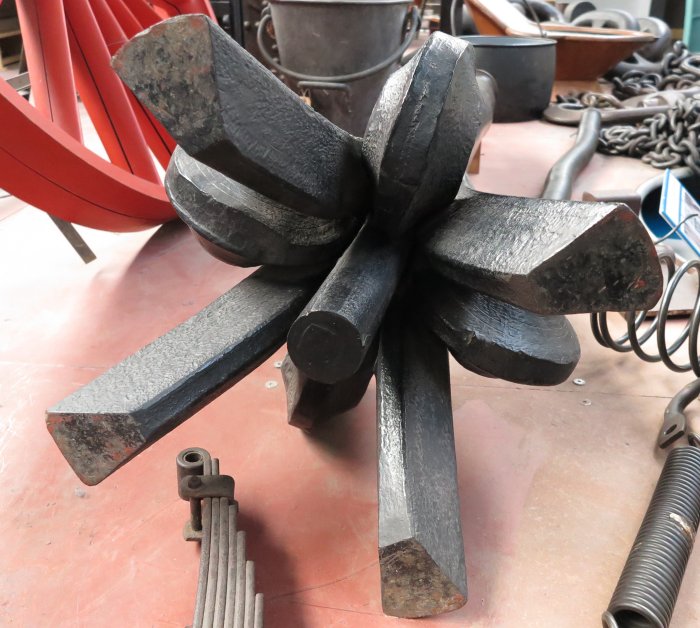
The Patent Shaft axle that is
on display in Hall 1, in the Rolfe Street Baths
building, at the Black Country Living Museum, in
Dudley. It is opened-out to show the bars that were
welded together to form the axle. |
|
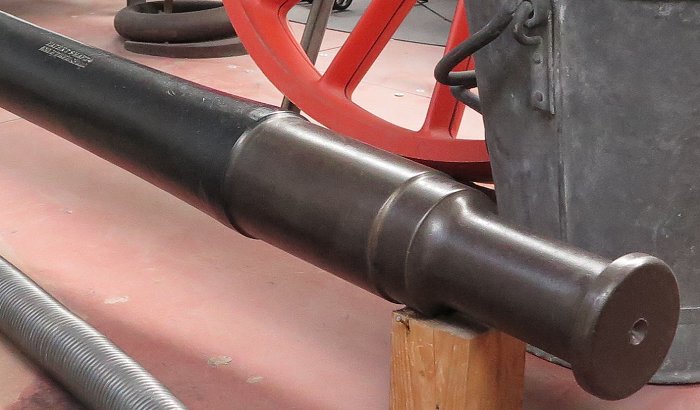
The other end of the axle in
the previous photo, which has been machined into its
final form. |
|
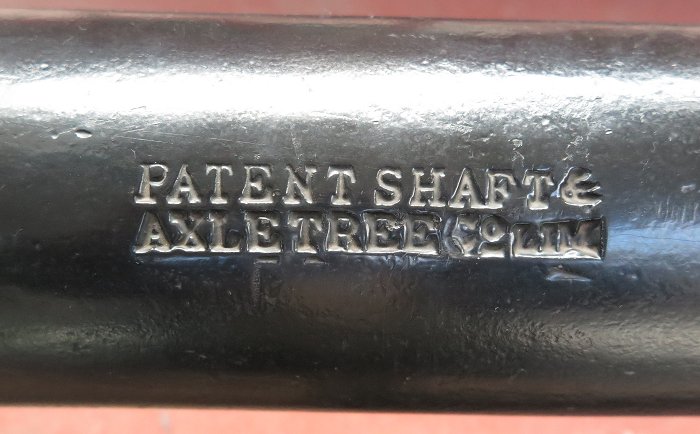
The maker's name stamped into
the axle above. |
|
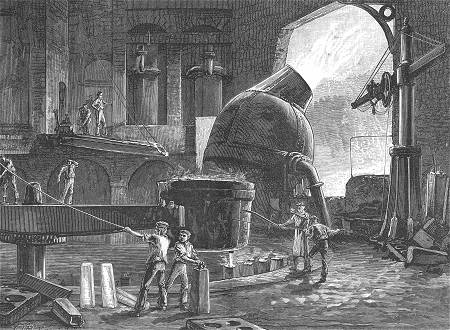
A Bessemer Converter. |
Hardy decided to patent the idea,
and with financial help from Samual Hodgetts, a grocer
from Toll End, he took out a patent in 1834. Hardy and
Hodgetts decided to set themselves up in business to
produce the new axles.
They purchased a forge at Leabrook
for £1200 from Joseph Rollason. At the forge were 2
puddling furnaces, a scrap furnace, and an engine. |
| Although work was undertaken to
improve the facilities on the site, no axles had been
produced by 1836. As a result Hodgetts became
disappointed with the project and withdrew.
Hardy soon found four other partners and began to devote
his whole life to the project, but production still
didn’t get underway and the business got into more and
more debt with the Birmingham and Midland Bank. The
bank’s manager Charles Geach realised that the axles
would be ideal for use on the rapidly growing railway
network, and that large numbers of reliable axles would
be required. Geach didn’t waste any time, and along with
12 men, including Hardy, he purchased the works and the
patent, and formed the Patent Shaft & Axletree Company
in 1838. |
|
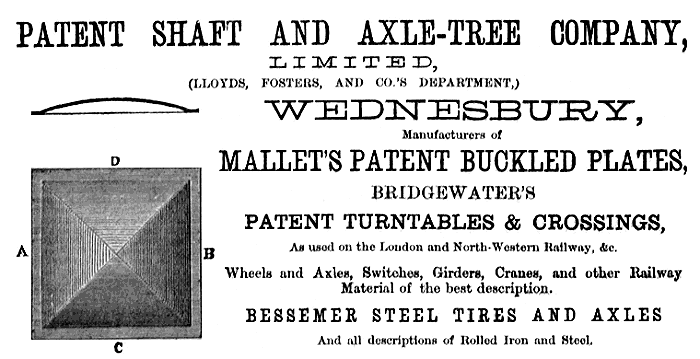
An advert from 1870. |
| Within 2 years Hardy left and took Anglican orders.
He was replaced as manager by his ex-clerk Thomas
Walker. In 1844 thanks to Walker’s efforts, the London
& North Western Railway adopted the patent axle, and the
company’s future was secured. In 1852 the company
purchased the adjoining Victoria Iron Works from
Fletcher, Rose & Company. |
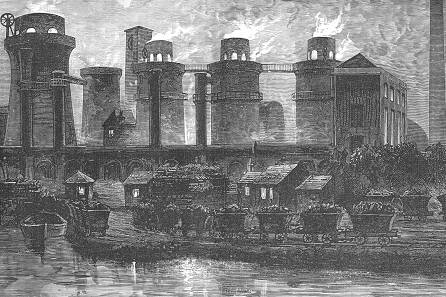
Blast furnaces at night.
|
| Geach died in 1854 and the company was purchased by
Thomas walker. At the time they had a railway steel
works, 5 forges, 4 mills, 12 hammers, more than 100
puddling furnaces, and employed over 800 men.
In 1864 the business became a limited company with a
capital of £300,000. Thomas Walker became Chairman, and
his assistant manager Richard Williams became General
Manager. The works now covered over 12 acres and
employed 1,500 men working around the clock. They
produced large numbers of products including axles,
wheels, tyres, rails and boiler plate.
In December 1866 the Patent Shaft
purchased the loss-making Monway Works and Old Park Works from
Joseph Foster Lloyd & Company after
their disastrous Blackfriars Bridge project.
The works and collieries were bought for £400,000. The
company could now produce wrought iron, Bessemer steel,
and constructional ironwork, all made from their own raw
materials.
At the time the company had 86
puddling furnaces, 3 blast furnaces and became one of
the most prosperous factories in the country.
|
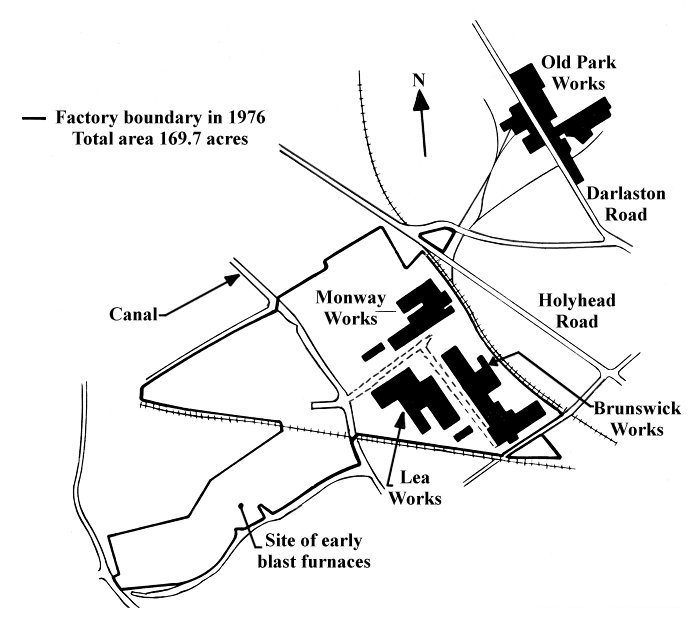
 |
|
 |
Return to the
beginning |
|
Proceed to
Old Park Works |
|